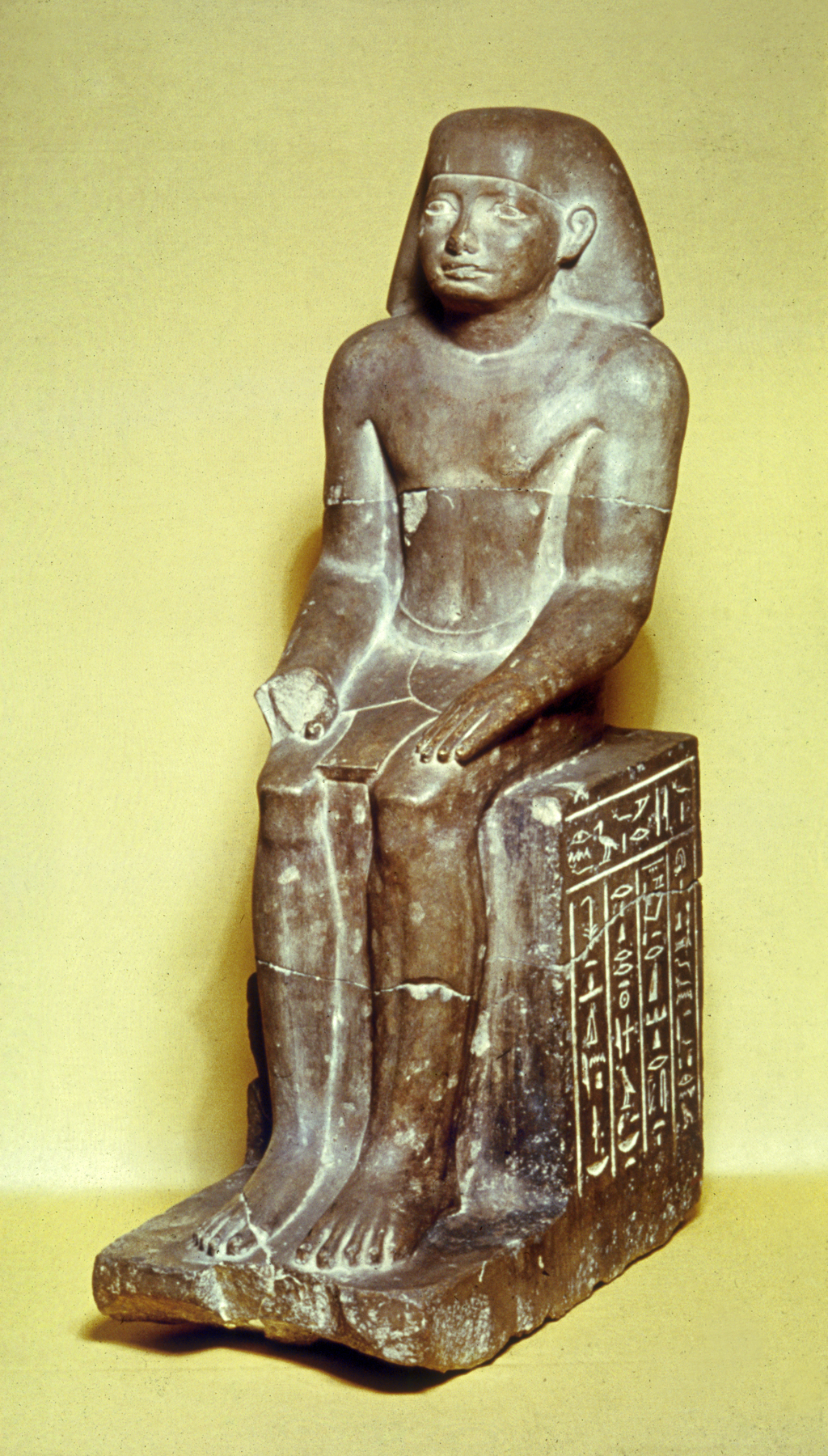Itj-ibj
(Ancient Egypt and Nubia )
Discovered in the ancient necropolis, or burial ground, in Asyut in 1913, the statue is inscribed on either side of the block-like seat with the offering texts for Itj-ibj, a minor official, represented with a shoulder-length head covering and wearing a shendyit, or pleated kilt. While early 12th Dynasty in style, this impressive seated statue shows Itj-ibj in a classic pose copied from Old Kingdom sculpture: hands balanced on his thighs, the left flat and the right clenched in a fist, holding a folded cloth.
Traces of red paint with white spots remain on the fleshy areas of the sculpture, and it has been suggested that the exposed parts of the body were painted to make the limestone resemble red granite, a more costly stone.
Inscription
Provenance
Provenance (from the French provenir, 'to come from/forth') is the chronology of the ownership, custody, or location of a historical object.
Maurice Nahman, Cairo, by 1926, [mode of acquisition unknown]; Henry Walters, Baltimore, 1927, by purchase [Joseph Brummer as agent; Brummer inv. no. X303]; Walters Art Gallery, 1931, by bequest.
Conservation
| Date | Description | Narrative |
|---|---|---|
| 11/24/1998 | Examination | survey |
Geographies
Egypt, Asyut (Place of Origin)
Measurements
26 x 7 7/8 x 15 1/16 in. (66 x 20 x 38.3 cm)
Credit Line
Acquired by Henry Walters, 1927
Location in Museum
Accession Number
In libraries, galleries, museums, and archives, an accession number is a unique identifier assigned to each object in the collection.
In libraries, galleries, museums, and archives, an accession number is a unique identifier assigned to each object in the collection.
22.142


